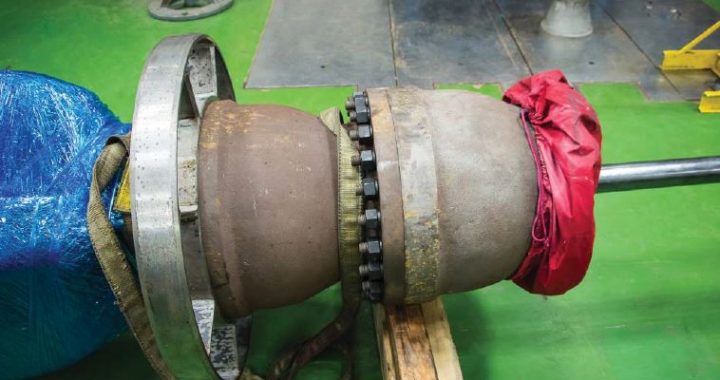A 5-day emergency testing turnaround for a nuclear pump proved no problem for this world-class testing facility.
Written by: Nick Dagres & Faisal Salman
Published by: Nuclear Plant Journal
When a vertical safety-related residual heat-removal pump failed its required surveillance performance test at a nuclear power plant, it created the need for emergency hydraulic performance and vibration testing. The plant required the pump back in operation within one week, to prevent shutdowns that could cost the facility up to $1 million per day.
The plant contacted Chicago based Hydro, Inc., which has Hydraulic Institute (HI) Pump Test Lab Approval (PTLA) – certified testing facilities and the ability to perform crucial testing on an urgent basis.
Background
During a routine check by the regulator, a safety-related heat removal pump failed its required in-house surveillance pump performance test. With a safe shutdown of the unit, the plant entered an LCO (Limited Conditions of Operation) period. The power station shut down the unit but wanted to avoid a full shutdown of the facility. This created an emergency situation for the plant.
According to the regulator’s strict standards, if performance requirements are not fulfilled immediately, the plant can be shut down completely. The LCO allows the plant to continue to operate as long as the problem is being resolved in a limited time frame. In this case, the time frame was seven days. To allow for shipping to and from the facility, Hydro had only five of those days to complete the project. The plant was concerned that the repair time might exceed the LCO. Other similar pumps remained in operation performing the same function, however the unit was shut down because there were no spare pump store place it while testing was being
performed. The original equipment manufacturer could not schedule the required tests in the abbreviated time span; therefore the Chicago service company was commissioned. Under normal conditions the scope of work would generally take about six to eight weeks to complete.

Pump as received
Identifying the Problem
In such cases, the regulator requires that a third party inspect the equipment to discover whether the issues were with the instrumentation or with the pump itself. As a result, immediate testing was required to determine whether the pump was functional.

